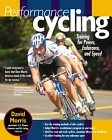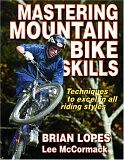New Bike Day (NBD) is always an exciting time. My problem is that I typically have to make so many changes to position and components from a stock setup, that it is rare that I'll just take a bike out of the box for a ride. As I usually get the cheapest model in order to get the frame, most of the components are lower level.
This post will summarize some of the early must-do changes and then the incremental changes I've been making. There were two almost show stopper changes that needed to be made. These are the kinds of changes that I kick myself over that I didn't consider them before placing that impulse bid on the bike.
An important consideration for me with any frame is the ability to run at least one small water bottle. I like to use some sort of go-juice energy drink on my rides. My typical goto is Powder Gatorade. Note powder Gatorade and not regular Gatorade. The powder Gatorade uses Dextrose as the sugar source which is used in more sophisticated energy drinks, where the regular Gatorade uses the high fructose corn syrup.
Regardless, a water bottle is important because a pack is sometimes a pain. Pain in the lower back but also pain in terms of cleaning and setting up. One reason, I didn't consider some of the Yeti super bike models is that inability to run a water bottle in the main triangle.
I experienced a Home Simpson Doh! moment when I unboxed the bike and installed my water bottle cage. A small water bottle would not fit into the triangle. Oh no. Is it a reasonable expectation that if there is are water bottle bosses on a frame, that a small water bottle would fit? Well, I would still want bosses on the frame so I could put a pump bracket on or something. The triangle was just too tight and the frame too small to fit the bottle at the current location of the bosses.
Thank God for Problem Solvers Adjustable Height Adaptor.
I was able to locate the water bottle just low enough that the top of the bottle could fit within the triangle. My inner weight weenie was just a little bit perturbed about adding more weight but this has been forgotten over time.
Another component issue that as a showstopper at first was the stock dropper post. It came with a KS Lev but it was sized small. The travel was only about 100mm or even less and at full height, it wasn't tall enough for me.
I took it off an am going to reuse it on the fat bike but had to find another post before I could even ride the thing. I opted for a cheap Bontrager fall line off Pink bike. The Bontragers are only sold for Trek bikes which happen to be the same seat post size as mine. It had decent reviews. It has been ok except for two things. It came out of the package with some rotational play. Also it does get sticky a little quick and requires some easy cleaning.
I got a 125mm. I tried to get a 150mm but in the short time of looking, didn't find one that could fit the dimension constraints. These include the max insertion depth, my desired full height saddle position, and the min insertion depth of the post. I think if I looked hard enough, I could find 150mm that would work, but for now this is liveable.
The other needed change prior to really doing any test riding was the stem/bar. I have been following a fitting approach from Lee Likes Bikes, that he branded as Ride Logic. The approach revolves around placing the handlebars in a specific position. Actually rather than one unique position, it allows some adjustability to placing the bar within an arc. This allow some flexibility based on your desired style of riding in terms of XC, Enduro, or Downhill.
This fitting approach is unlike anything I have seen out there. Most fitting systems are based on road-bike approaches with emphasis on pedaling power. This one lets you put the saddle where you want it for your desired pedaling, but emphasizes technical mountain biking and he feels that handlebar placement is the key enabler for good technical riding.
I am short in general, and proportionally have a very short torso. Hence, the reach value of a bicycle's geometry has been an important one for me. The trend in modern bikes is towards this longer, lower type of bike. So the reach values have been getting bigger and bigger over time. The results of the fitting calculator he uses was to place my bars lower and closer.
The growing reach values as well as increasing stack values was completely counter to what I needed according to his fitting approach. The only way to get the bars low enough was to resort to low rise stem.. Thankfully, Syntace has recognized this as a problem and created their Flat Force line of stems. These have a negative rise stem which helps in getting the bar low enough.
I am currently using the 44mm flat force stem in combination with a Race Face carbon flat bar. The flat bar as +/- 5mm rise. I currently have it -5mm. I am going to try some different positions just to see the difference. One thing that is good about approaching fitting like this, is that it allowed me to place the bars in a specific position and I was relatively good to go. In the past it has taken months and months of messing with bar/stem, spacer position. Here, I used his calculator with my frame/fork's stem geometry to calculate the desired position in terms of the bar rise and headset spacers.
These were the fundamental changes that needed to be made just to ride it.
There is one note I want to make. One of the few things I am struggling with on the bike is the manual-based front wheel loft. This has been a litmus test for several of my recent bikes, such as the On One fat bike and the On one 456. I can't loft the front wheel as easy as I'd like. I am not talking a true manual, which I have never been able to do yet.
Of note though is that the first time I hopped on the bike with the stock bars/stem, I did loft that front wheel easy enough to surprise me. I am trying to capture that again and not sure what the factors were that contributed to it. It might have been just new bike excitement and being on a dually again, The stock bars are wider, the bars had rise to them, the stem had rise to it. The rear suspension had the black spacer in, ....Regardless I do want to be able to loft the front wheel a little easier using the manual motion.
I the upcoming posts, I'll discuss some initial ride impressions, and the next set of major changes. They involved wheels, brakes shifter, crankset, and press fit bottom brackets. There was some learning curves to go through with regards to the BB removal tools, the process, the internal cable routing, and wheel issues.




